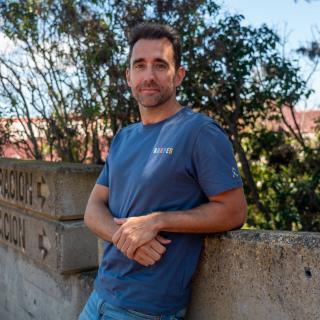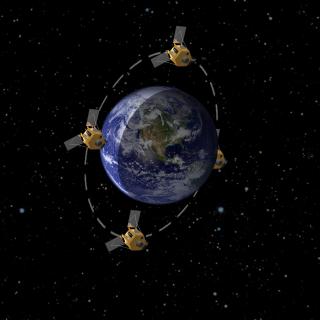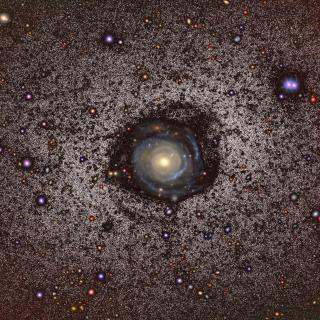It may interest you
-
 IAC researcher David Aguado has obtained a prestigious Starting Grant from the European Research Council (ERC), aimed at promoting promising young scientists. This is the third ERC grant -one of the most competitive and recognized of the Horizon Europe program- that the center has received so far this year, thus consolidating its international projection. These highly competitive grants provide up to €1.5 million over five years to support outstanding young scientists in establishing their own independent research groups and pursuing pioneering scientific ideas. Searching for the first starsAdvertised on
IAC researcher David Aguado has obtained a prestigious Starting Grant from the European Research Council (ERC), aimed at promoting promising young scientists. This is the third ERC grant -one of the most competitive and recognized of the Horizon Europe program- that the center has received so far this year, thus consolidating its international projection. These highly competitive grants provide up to €1.5 million over five years to support outstanding young scientists in establishing their own independent research groups and pursuing pioneering scientific ideas. Searching for the first starsAdvertised on -
 El Instituto de Astrofísica de Canarias (IAC), a través de su departamento IACTEC-Espacio, celebra hoy la System Requirements Review (SRR) de la misión IACSAT-1, un hito clave que marca la finalización de la fase B1 del proyecto y consolida todos los requisitos técnicos, científicos y programáticos necesarios para avanzar hacia el diseño preliminar del satélite. IACSAT-1 es la primera misión liderada íntegramente por el IAC dedicada a la observación astronómica desde el espacio. Se trata de un proyecto desarrollado por IACTEC-Espacio, con un equipo científico dirigido por el Prof. RafaelAdvertised on
El Instituto de Astrofísica de Canarias (IAC), a través de su departamento IACTEC-Espacio, celebra hoy la System Requirements Review (SRR) de la misión IACSAT-1, un hito clave que marca la finalización de la fase B1 del proyecto y consolida todos los requisitos técnicos, científicos y programáticos necesarios para avanzar hacia el diseño preliminar del satélite. IACSAT-1 es la primera misión liderada íntegramente por el IAC dedicada a la observación astronómica desde el espacio. Se trata de un proyecto desarrollado por IACTEC-Espacio, con un equipo científico dirigido por el Prof. RafaelAdvertised on -
 Astronomers at the Instituto de Astrofísica de Canarias (IAC), using the 2-meter robotic Two-meter Twin Telescope (TTT) at the Teide Observatory, have obtained the deepest optical images ever taken of Malin 2, one of the largest and faintest spiral galaxies in the Universe. These ultra-deep observations have revealed previously unseen structures, including several diffuse stellar emissions and a striking, elongated spiral-like feature, hinting at past interactions with other galaxies. The team has also identified a potential ultra-diffuse dwarf galaxy (UDG) about 400,000 light-years fromAdvertised on
Astronomers at the Instituto de Astrofísica de Canarias (IAC), using the 2-meter robotic Two-meter Twin Telescope (TTT) at the Teide Observatory, have obtained the deepest optical images ever taken of Malin 2, one of the largest and faintest spiral galaxies in the Universe. These ultra-deep observations have revealed previously unseen structures, including several diffuse stellar emissions and a striking, elongated spiral-like feature, hinting at past interactions with other galaxies. The team has also identified a potential ultra-diffuse dwarf galaxy (UDG) about 400,000 light-years fromAdvertised on